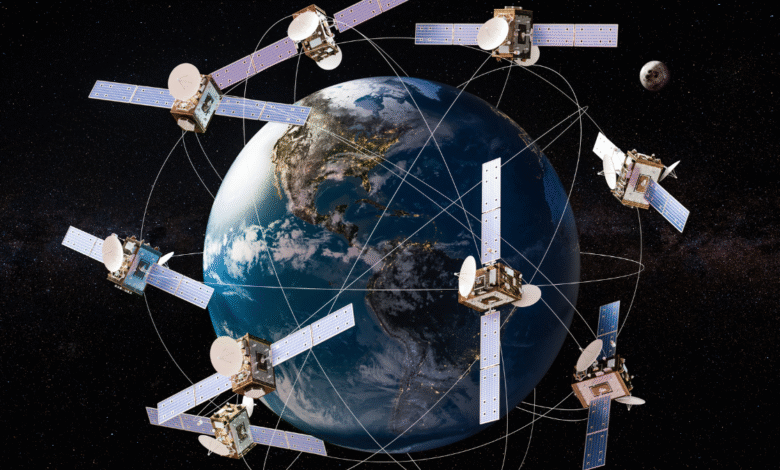How Satellitter Have Empowered Our World

In our lives, they have become invisible; but still, a weighted body requires delineation. Satellitter are essential we rely on them to keep us connected, to help scientists monitor weather patterns and more. But, tell me: have you ever thought about how they work and what roles exactly enable the modern world to become so interconnected? In this blog, we look at how satellites perform an indispensable cornerstone function and the necessity of their application across different fields to perceive our growing reliance on them.
What Are Satellitter?
Satellitter are basically structures which are human-made and are used for the purpose of revolving around the Earth or any other natural body. They go up into space with a mission: communications, navigation, Earth observation or even exploration of the universe. They provide us access to global communications, allow us to monitor changes in our environment, and even offer a means by which we can visit outer space beyond the confines of our planet.
The first satellite technology in 1957 Sputnik 1. This is the day in 1969 that would lead to what will ultimately become among the greatest achievements of our culture.
And Their Types(Roles)
Communications Satellites
Communications Satellite The first and one of the most popular types is a communication satellite. Satellites that relay signals in space are used to communicate around the globe. The basic fact is, you can thank communications satellites for keeping the telephone — and worse still satellite television and sat-internet services — working.
This started in 1962 when Telstar 1 was launched, which is known for the first live television exchanges across the Atlantic. Today satellites work to serve millions of users through providing such services as video calling, weather updates etc.
Earth Observation Satellites
In addition to connectivity, communications satellites are critical and there is another type of important satellite known as earth observation satellites. In that role, they help to track weather and environmental changes as well as urban development globally by monitoring the Earth’s surface from space.
They let scientists look down from above, at a forest being chopped, or a habitat about to be lost, at permafrost bubbling with methane, or tell an entrepreneur what they are about to build is right on top of a fault line — or inform an agronomist how much water there is in the soil. With Earth observation, satellites give us a big-picture view enabling our understanding of what is happening on — and to — the planet, providing essential information for everything from natural resource management to disaster response.
Navigation Satellites
Does it remind you a bit of the GPS many use to find his way around? Thank a satellite. This can be done — as we all know these days when our phones plan the quickest route through the traffic or help us home on a peak during a hike — with more than five digits of decimal place between locations, far closer than an ordinary atlas.
And just like the GPS satellites that beam the time signals to our phone (or car or whatever) that are used to work out where we are, these satellites too can give us an exact (to within about a meter accuracy) fix on where we are. GPS systems have become essential to a number of areas, contributing to the accuracy required for aviation and disaster aid.
Scientific Satellites
Science satellites This is a constellation of scientific satellites that have been launched into space so that mankind can study the universe. Space telescopes capture images of galaxies, planets, and stars that are light years away from us as they offer up high definition photos. These investigations allow us to study even more about the universe, and spacetime itself.
We also observe the climate, radiation and space weather of the Earth through scientific satellites thus explaining more about our planet as well as beyond.
Military Satellites
Defense — While communication and research are talked about the most as satellite uses an equally important but less hot topic is defense. Space components also enable secure military communications, surveillance and intelligence. For instance, these satellites are employed to track movements that enemies are taking which implies military focal points would stay solidify and united.
The Age of Satellite Engineering
Satellite technology keeps evolving, and we are already knocking on the doors of a new age in space-technology with greater things to come.
Miniaturization: CubeSats
More recently, we have been the age of CubeSats- small, low cost and highly capable satellites. These small-scale satellites have widened the scope of contributions to space research, offering universities and research agencies as well as commercial entities an affordable way to do so. CubeSats are an example of increased access to satellite use among educational and industrial sectors, thanks in part to lower costs and smaller size.
AI-Powered Satellites
Another excellent advancement is the AI in satellite tech. AI helps satellites to break down data instantly, so that decisions are faster and observations become more accurate. As we are tracking climate change and monitoring natural disasters, AI allows satellites to be more meaningfully integrated with our daily lives.
Laser Communication
Laser communication is one of the most interesting improvements being made to satellite technology. With laser communications, however, instead of using traditional radio waves, satellites can transfer data between each other up to 10-100 times faster. This will not only make Satellite Networks more optimal, but also fill the never-ending demand for high-speed internet around the world.
The Economic and Environmental Impacts of Satellites
The Economic Value of Satellites
Satellites are a stunning triumph of technology and a multi-billion dollar industry. Global space economy is expected to nearly triple to $1.8 trillion by 2035 The growth is spearheaded by growing demand for satellite services among telecom, agribusiness and defense industries.
Addressing Space Debris
Satellites are incredibly useful, but they also create a lot of space junk, and this has started to become a problem. The issue of space debris is the fact that there are thousands of satellites in orbit with a potential to cause damage not only to operational satellites but also for the future space mission. Thankfully, there are programs being developed to aid in the creation of these debris retrieving technologies and minimize future collections of litter.
What is the Future of Satellites?
In the future, satellites will still be an irreplaceable part of how we talk to each other, move around and govern the circadian shifts in our little patch of cosmic 3×10^8THWOP. Yet with the improving satellite technology, even more profound changes are on their way.
- Sustainability: The move towards satellite technologies that are sustainable is a growing priority. Space junk is even more of a pressing problem and there are moves to creating satellites that can be deorbited cleanly at the end of their life cycle, decreasing further damage.
- Global Cooperation: Greater numbers of countries and companies taking advantage of space resources will necessitate cooperation in the international arena to manage space traffic, prevent conflict and use outer-space for all of humanity.
- Commercialization: Part of this greater polarity is the influx of private company entries to the satellite industry, forcing traditional players to compete more—and presumably innovate more too. This results in savings for consumers and improved services.
Conclusion: Satellites, Shaping Our World
Satellites have deep roots in space exploration, and now they serve as the foundation for much of today’s infrastructure. Satellites are also revolutionising world communications and the way we view our world from orbits here on Earth. Given the accelerating pace of technology — and that things are not going to slow down in this world — you can expect a lot more from satellites in designing our future.




